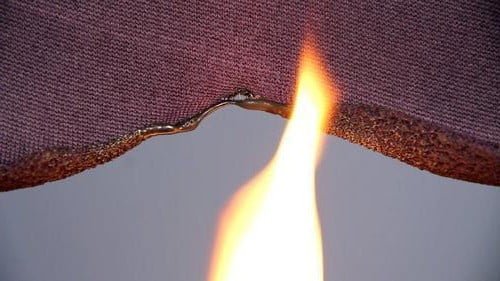The introduction of new flame-retardant fabrics and furniture has significantly changed safety in homes and public places.
In the past, items like curtains and sofas would easily catch fire, causing flames to spread rapidly. Today, advancements in fire-resistant materials have made spaces much safer by slowing and preventing the spread of fire.
These innovative materials protect both individuals and property by reducing the risk of fires and minimizing potential damage. This important development has revolutionized how safety is approached in environments where fabrics and furniture are present.
What Are Flame Retardant Fabrics?
The first thing to understand about flame-retardant fabrics is that there is a difference between flame-retardant fabrics and flame-resistant fabrics. Flame-resistant furniture or fabric is made from material that is naturally resistant to flames or non-flammable – due to chemical composition.
Flame retardant fabrics are made in a way that they can self-extinguish when they’re burning. They are treated with chemicals so they can slow down the process of burning or avoid burning in general. A flame-retardant-treated fabric takes significantly longer to burn compared to other fabric types and materials.

Types Of Flame Retardant Treated Fabrics
A flame retardant fabric is a type of fabric that is resistant to burning. With that understanding, let’s look at the two types of flame retardant fabrics: chemically treated fabric and inherently treated fabric.
Chemically-Treated Fabric
Fabrics under this category are made into flame-retardant fabrics after being treated with chemicals. They’re originally flammable fabrics but are treated with flame-resistant chemicals through various methods. They can prevent fires, slow their spread or resist it.
Inherent Flame-Retardant Fabric
These fabrics are naturally resistant to flames. No flame retardant properties were added to their fibers when they were engineered. As they’re naturally resistant to flames, they don’t undergo any additional treatment. Some examples are of wool and Kevlar. These can resist flames better compared to materials like linen or cotton because of the arrangement of their fibers. These are very good fabrics and offer great resistance against flames.
How Are Flame-Retardant Fabrics Made?
There are two common methods to make fabrics flame retardant.
Chemical Immersion Method
This approach involves soaking the fabric in a special chemical solution. The fibers absorb these chemicals, forming a protective shield that blocks flames from penetrating.
The chemicals respond to high heat almost like a fire extinguisher. This method is most effective for fabrics made from natural fibers.
Application of Fire-Resistant Coating
In this technique, a flame-resistant layer is coated on the back of the fabric. Unlike soaking in chemicals, this can make the fabric appear stiffer and less flexible.
This is useful for adding fire protection without altering the front appearance of the fabric.
bottom line
Using a flame-retardant fabric for clothing or furniture serves as a layer of protection against flames. It protects you and your home from the devastating damage caused by fires. They can also decrease injuries and risk.
Now that you know everything there is to know about flame-retardant fabrics, we advise you to purchase flame-retardant-treated fabrics or furniture from a trusted supplier.
